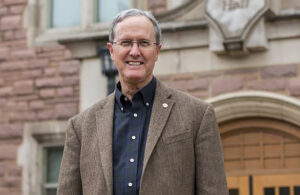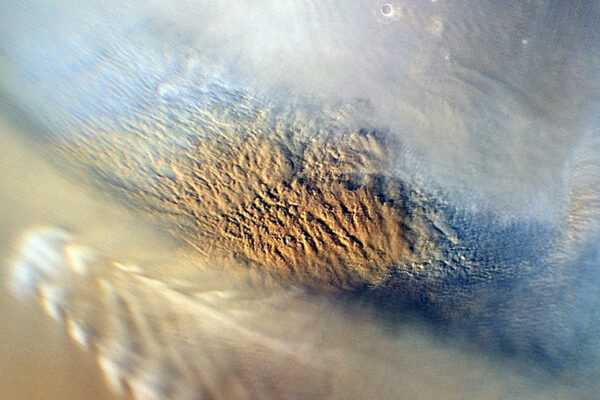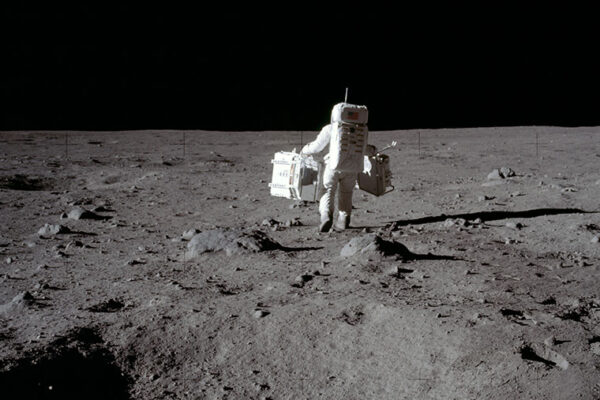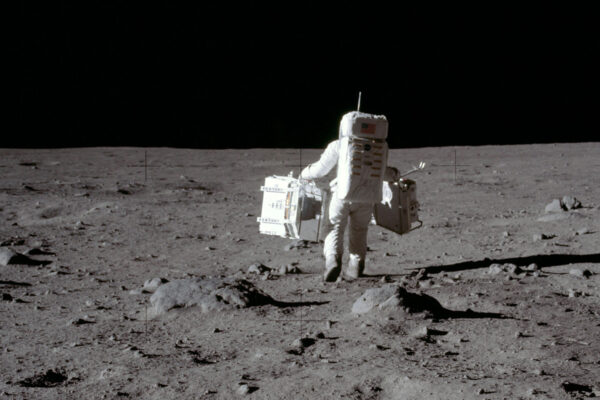This month marks the 50th anniversary of the first moon landing of the Apollo program, and a leading lunar expert wants the world to keep exploring.
Brad Jolliff, the Scott Rudolph Professor of Earth and Planetary Sciences in Arts & Sciences at Washington University in St. Louis, helps to lead a research team that soon will unlock a set of samples collected from the moon nearly a half-century ago — ones that actually are from the Apollo 17 mission, and have never before been exposed to Earth’s atmosphere.
‘We need to learn how to live and work off Earth and beyond low Earth orbit.’
Brad Jolliff
Jolliff’s research focus is on the moon and Mars, the materials that make up their surfaces, and what they tell about the planets’ history. He’s excited about what can be learned from research on new samples of the moon — especially as relates to signs of water ice and other volatiles that could be significant resources for future space exploration.
But humans have already learned much from the very first samples collected by the Apollo 11 astronauts.
Even though the real goal of that mission was to put a man on the moon and bring him back safely — Jolliff jokes that science was “kind of an afterthought” for Apollo 11 — scientists did learn a lot from the first rocks and soil brought back from the moon.

“In terms of water content, the first samples were bone dry. No water, no hydrous minerals, really nothing in the way of volatiles,” Jolliff said. “They were also devoid of life — no organic material, no concerns about microbes or anything that might cause problems for humans.”
“In fact, the early astronauts — the Apollo astronauts — were quarantined until it could be determined that they hadn’t come back from the moon with harmful microbes.
“Well, it turned out that there were no microbes, no life,” Jolliff said. “It was totally devoid and barren of life. No atmosphere, and a very, very hostile kind of environment at the surface. All that was learned from the first samples.”
Jolliff and his colleague Mark Robinson, a professor at Arizona State University and the principal investigator of the NASA Lunar Reconnaissance Orbiter Camera, recently wrote an article for Physics Today, summing up what they see as the scientific legacy of the Apollo program.
The article provides highlights of what was learned from each Apollo mission, and describes important aspects of lunar science including the importance of sample curation and handling.
NASA plans to send humans back to the moon by 2024.
Jolliff has a few ideas about science priorities for the return, as he explained to the Saint Louis Space Frontier, a chapter of the National Space Society.
“We need to learn how to live and work off Earth and beyond low Earth orbit,” Jolliff said, noting that he is influenced in this regard by the late lunar geologist Paul D. Spudis, a key proponent of the return of humans to the surface of the moon.
Jolliff’s list of priorities draws heavily from the NASA Advisory Council’s 2007 Workshop on Science Associated with the Lunar Exploration Architecture (Jolliff was the general chair for this workshop), and from the National Research Council’s report: “The Scientific Context for Exploration of the Moon.”
“I put resources front and center here,” Jolliff said. “The thing we need to do is to better understand the resources that are deposited and then to prove them.
“This has feed-forward to solar system exploration, because it’s cheaper to go to the moon and get some of these resources — to develop products and use them in space,” he said. “The ‘gravity well’ of Earth makes things very, very expensive to lift off from Earth. So we want to get the resources and build things on the moon.
“It’s not a case of been there, done that,” he said. “There’s much left to do.”


